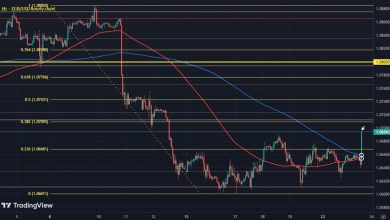Big savers can invest more in 401(k)s with after-tax contributions

Kate_sept2004 | E+ | Getty Images
If you want to save more in your 401(k) for 2023, your plan may have a feature that lets you bypass the annual carryover limit.
For 2023, you can put $22,500 into your 401(k), plus an additional $7,500 if you’re 50 or older. But so-called after-tax contributions can exceed these limits. The 401(k) maximum limit for 2023 is $66,000, including employee deferrals, after-tax contributions, company matching, profit sharing and other deposits.
After-tax contributions are a “no-brainer” if you earn enough to comfortably save beyond the employee 401(k) deferral limit, said certified financial planner Dan Galli, owner of Daniel J. Galli & Associates in Norwell , Massachusetts.
However, only 10% of employees with after-tax deferrals took advantage of the feature in 2022, and those who contributed generally had higher incomes and longer job tenure, according to Vanguard’s 2023 How America Saves report.
“There are many benefits, unless you need the money between now and retirement,” Galli said.
Yet many 401(k) plans don’t offer after-tax contributions because of plan design restrictions, he said. In fact, only 22% of plans provided for this option in 2022, according to the same Vanguard report.
Maximize 401(k) Deferrals First
Before taking advantage of after-tax contributions, you’ll want to maximize pre-tax or Roth deferrals to get your employer match, said CFP Ashton Lawrence, principal at Mariner Wealth Advisors in Greenville, South Carolina.
“Then we can have a conversation about where your next contribution goes,” he said. “For some people, after-tax contributions may not be appropriate.”
Typically, advisors use a “holistic approach” when deciding where to allocate funds, taking into account the client’s goals, timeline and other factors, Lawrence said.
Moving funds to “avoid tax” on growth
After-tax and Roth contributions are similar because both start with after-tax deposits. However, while Roth contributions grow tax-free, after-tax deposits grow tax-deferred, meaning you’ll have to pay income tax when withdrawn.
With that in mind, once you’ve made after-tax 401(k) contributions, it’s important to periodically convert those funds to a Roth account to jumpstart tax-free growth.
“It is widely believed that Roth conversions are always done in Roth individual retirement accounts,” Galli said. But you can use in-plan conversions to move the funds into your Roth 401(k) rather than an IRA, which can offer cheaper investment options and some protections.
By doing this correctly, you can essentially avoid tax on all the growth, and that’s where the magic lies.
Dan Galli
owner of Daniel J. Galli & Associates
When converting, you’ll have to pay withholdings on after-tax contribution growth, which is why Galli suggests converting funds to Roth accounts at least quarterly. “By doing this correctly, you can essentially avoid tax on all the growth,” he said. “And that’s where the magic lies.”
Don’t miss these CNBC PRO stories:
cnbctv18-forexlive





